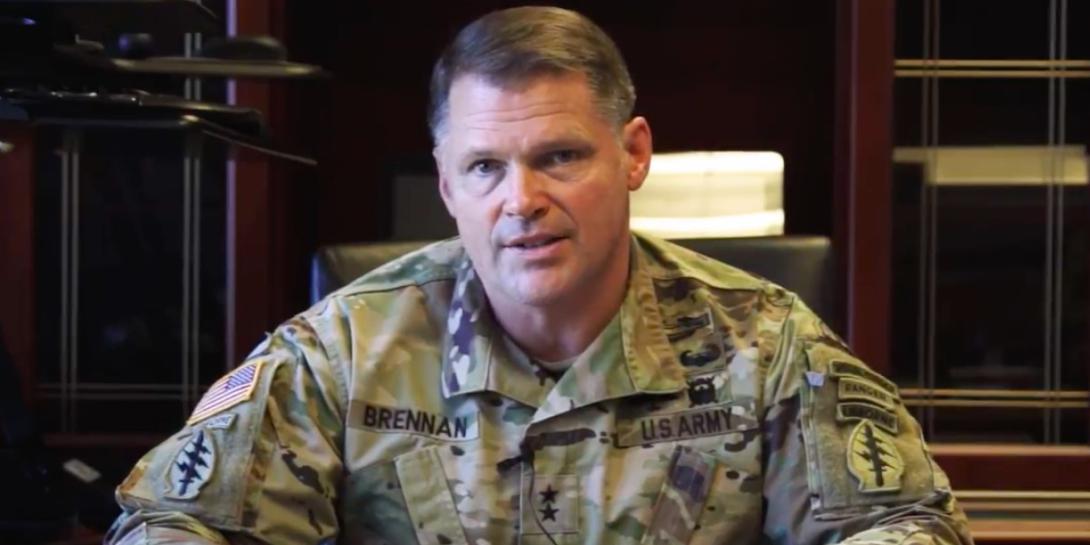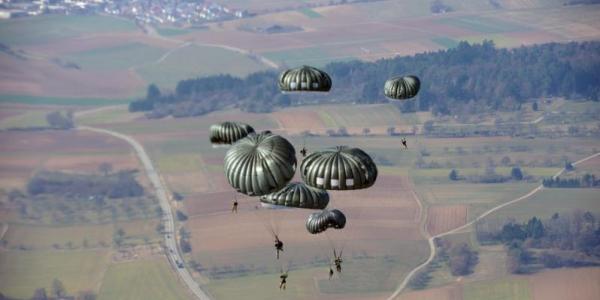Special Forces Command Seeks Key Data Aggregation, Cyber Tools
The U.S. Army’s 1st Special Forces Command (Airborne) is looking to fill vital cyber and communications gaps, but with technologies tailored to its unique missions, said Maj. Gen. John Brennan, USA, commanding general, 1st Special Forces Command (Airborne), Fort Bragg, North Carolina. The command is the largest divisional element in the Army, with soldiers that serve in special forces, psychological operations groups and battalions, civil affairs groups and information warfare groups and for the national mission force that operates mostly with the Joint Special Operations Command units.
“Our 23,000 men and women are stationed all across the globe in virtually every time zone and in about 70 countries on any given day,” stated Gen. Brennan, when delivering a keynote address on February 17 during AFCEA’s TechNet Augusta Virtual Solutions Series.
Active-duty groups within the command are focused on supporting the U.S. combatant commands and operate in a geographically diverse manner, with specialty training, cultural expertise and linguistic talents to operate “effectively and fairly autonomously” in their areas of operation, the commanding general said.
The need for psychological operations and cyber-related missions is only increasing across the globe, says Maj. Gen. John Brennan @USArmy, commanding general, Special Forces Command #AFCEATechNet pic.twitter.com/ISZeZ5WzJx
— Kimberly Underwood (@Kunderwood_SGNL) February 17, 2021
The demands for psychological operations and cyber-related missions are only increasing, as is the need to conduct sensitive activities on a global scale, Gen. Brennan said. As such, the Special Forces Command needs technologies that will enable the ability to conduct missions undetected.
“What we've seen is that the great powers, Russia and China, are very good at trying to find us in the white noise,” Gen. Brennan continued. “So, we're trying to employ what is called the ‘naked man’ concept where we send someone overseas with absolutely no electronic signature on them and then they can procure local indigenous equipment and then blend into the information environment, while still communicating back to their higher headquarters without raising a signature. That is something that we're very interested in but we're not there yet.
He also noted that with the advent of smart cities, the Chinese have become very adept at aggregating data to find U.S. special forces operating in the Far East, “as well as all the way back here at home,” he warned. “So, it's important that we're able to obfuscate our signature and everything that we do and that is definitely a capability gap.”
Regarding cyber-related solutions, the command has long been a consumer of cyber capabilities, but again needs tailored technologies. “Not unlike any other DOD [Defense Department] entity we have some common interests out there in employing cyber capabilities, but I think we do it a little bit different than a lot of the enterprise solutions,” Gen. Brennan stated.
Previous cyber-based solutions have focused on “finding bad guys using cyber-enabled tools,” but now in the era of great power competition, the Special Forces command is seeking more advanced technologies to enable unconventional warfare and support a global sensor network, “which allows us to observe, orient, decide and act on the nation's behalf through a variety of different mission sets,” he noted. “We're organized, equipped and trained to conduct irregular warfare and unconventional warfare on a global scale, and cyber plays a huge part in that.”
Given the current fiscal constraints and operating during the pandemic, the command is seeking shorter-term acquisitions for its digital solutions, and under a service model. “It's much more important that we gain cyber capability through short-term service contracts versus long programmatic trails which cost millions and really increase the lag in the time it takes to get a proper tool into our operators hands where it can be used immediately,” Gen. Brennan clarified. “We are already using low equity tools for some of our EW- [electronic warfare-] based capabilities out there on the battlefield.”
Notably, the Special Forces Command is in the process of developing an Information Warfare Center with the 8th Psychological Operations Group. And with its work of supporting the combatant commanders and Joint Task Force commanders, the command also is adding “more and more” cyber-electromagnetic activities, or CEMA-related capabilities. “We desire to have the ability in the future to create effects in remote locations from here at Fort Bragg in support of our forces that are forward,” the general specified. “Each theater is also building out an information warfare task force. We already have those in CENTCOM [Central Command], in the INDOPACOM [Indo-Pacific Command] area of operations, in AFRICOM [Africa Command] and soon to be one in SOUTHCOM [Southern Command]. Those forward nodes are supported back here from the Information Warfare Center as well as through our sensitive activities programs.”
@USArmy Special Forces Command is developing an Information Warfare Center with the 8th Psychological Operations Group, reports Maj. Gen. John Brennan #AFCEATechNet pic.twitter.com/2Stp91Vde0
— Kimberly Underwood (@Kunderwood_SGNL) February 17, 2021
However, the main capability gap that touches most of the command’s efforts is data aggregation. “The data aggregation problem that we are experiencing is pretty intense,” Gen. Brennan admitted. “As we pull in information from across the various social media platforms to find opportunities to compete with Russia, China, Iran, North Korea and violent extremist, making sense of that amount of data is just something that we are not equipped to do.”
The command is pursuing the construction of a data lake to provide a repository of information from which the command’s soldiers can employ to support psychological operations, techniques and procedures. The command also wants to be able to leverage data aggregation in relation to its international partners.
“We literally have hundreds of different partners across the globe,” the commanding general shared. “And the security classification guidance definitely makes it more difficult to do our job and share the right information with the right partner.”






Comment
Thanks for sharing great
Thanks for sharing great information. Some thing I’ve asked many people in high-ranking successful positions what is the one thing that they do, if they had to choose only one, that has brought in success and most people say the same thing - here it is:
Surround one’s self with people who are smarter than you. For me, it does not appear to be a difficult chore. Nonetheless, I think there might be some little jams from this conversation about linear problem-solving versus networkism -
https://www.linkedin.com/posts/mccall-langford-she-her-b3841716b_centra…
Very interested in helping
Very interested in helping out.
Comments